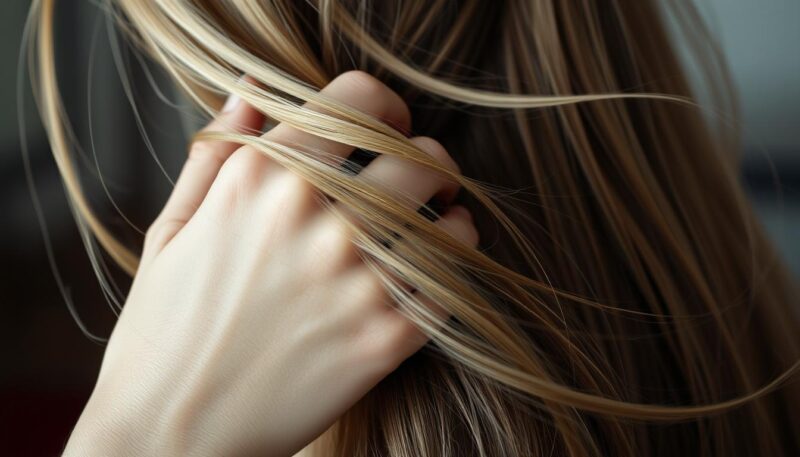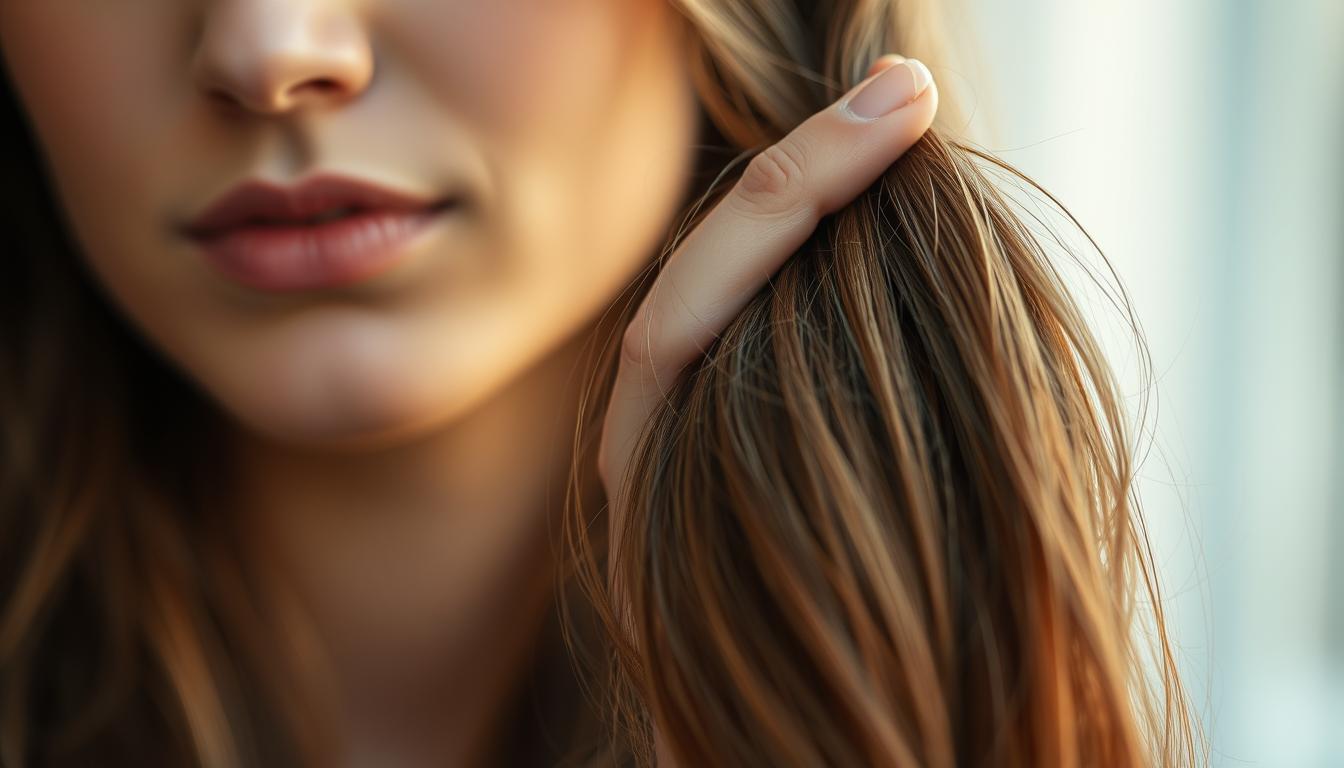Have you ever noticed women playing with their hair and wondered what it might mean? It’s a common gesture that has intrigued body language experts and casual observers alike. This simple act can say a lot more than you might think. Understanding the non-verbal communication displayed through female gestures like hair play can give you incredible insights into human behavior. Whether in social settings or intimate conversations, these subtle cues can speak volumes about feelings, intentions, and emotions.
Dive into the fascinating world of communication insights as we uncover the reasons behind hair playing. The social psychology surrounding this gesture can shine a light on how women express themselves without speaking a word. From self-soothing habits to signals of attraction, hair play is a dynamic part of body language that offers a deeper understanding of interpersonal interactions. Let’s explore these body language insights and learn more about the unspoken language that enriches our everyday lives.
Key Takeaways
- Hair playing is a common non-verbal communication seen in women.
- This gesture can convey a range of emotions, from nervousness to attraction.
- Understanding these female gestures can improve your perception of social interactions.
- Hair play is often a subconscious act tied to self-soothing behavior.
- Recognizing these body language insights enhances relationship building.
Understanding the Psychology Behind Hair Play
The psychology of hair play is a fascinating aspect of human behavior that can reveal much about an individual’s emotional state and intentions. It can serve multiple functions, from self-comforting mechanisms to subtle communication signals in social interactions. Let’s delve deeper into the reasons behind why women often play with their hair.
Self-Soothing Behavior Explained
One primary reason for hair play is self-soothing behavior. When you’re in stressful or awkward situations, playing with your hair can provide a sense of comfort and distraction. Behavioral studies indicate that this act can reduce anxiety and serve as an outlet for nervous energy.
Hair Play as an Indicator of Attraction
Beyond self-soothing, hair play can also serve as a potent attraction cue. Research on non-verbal cues highlights that women often use hair twirling or stroking as a sign of flirtation. This subtle gesture can indicate romantic interest and serve as an invitation for further social interaction.
Social Interactions and Hair Twirling
Observations in various social settings show that hair play can communicate different meanings based on the context. Whether it’s a casual meet-up or a formal event, this simple gesture can convey comfort, interest, or even boredom. Understanding these nuances helps in interpreting the complex layers of human behavior.
Non-Verbal Communication: What Hair Play Signals
Non-verbal communication plays a crucial role in how we interact with others, conveying messages often more powerfully than words. Hair play, specifically, can be a potent form of non-verbal communication, offering hints about one’s feelings and intentions.
Flirtation Signals and Hair Touching
Hair touching is frequently observed during flirtatious interactions. This behavior can be an unconscious signal of attraction. In the realm of social psychology, it is understood that such gestures can indicate a person’s comfort level and interest in their conversation partner. By recognizing these flirtation signals, you can better understand the dynamics at play in social situations, making you more adept at reading the subtleties of human interaction.
Hair Play in Different Social Contexts
The context in which hair play occurs significantly affects its interpretation. In professional settings, frequent hair touching might be seen as a self-soothing behavior, a way to deal with stress or anxiety. Conversely, in casual social gatherings, the same action might be perceived as an indication of engagement and interest. Social psychology suggests that the environment shapes how non-verbal communication is both expressed and interpreted.
| Context | Possible Interpretation |
|---|---|
| Professional Workplace | Self-Soothing; Stress Relief |
| Casual Social Gatherings | Engagement; Interest |
| Formal Events | Nervousness; Attractiveness |
Understanding these nuances allows you to better navigate social interactions, whether aiming to identify flirtation signals or simply interpreting non-verbal communication more accurately.
Why Do Women Play With Their Hair?
Hair play is a fascinating aspect of body language that reflects a wide range of motivations, from habit to complex subconscious actions. One of the primary reasons women engage in hair play is comfort. For many, it becomes a soothing gesture, akin to rubbing a soft blanket or tapping fingers on a desk. It’s an act that can provide emotional comfort or serve as a stress-relief technique.
In addition to serving as a comforting action, female gestures such as hair twirling can also be a signal of attraction. When a woman plays with her hair in the presence of someone she is interested in, it can be a form of non-verbal communication, signaling her interest subtly. This type of body language can be an unconscious attempt to draw attention to her appearance and convey openness or flirtation.

Culture and social norms also play significant roles in why women might engage in hair play. Certain gestures may be culturally ingrained, making them appear more frequently within specific contexts or social settings. Societal expectations and personal identity can shape these subconscious actions into habitual patterns that offer a glimpse into a person’s inner world.
Furthermore, individual reasons must be considered when exploring the motivations behind these female gestures. For some women, hair play is simply a frequent habit ingrained over time, while for others, it could be a strategy for self-presentation or a method of managing social interactions. Understanding these aspects of body language can provide deeper insights into interpersonal communication.
| Factor | Motivation |
|---|---|
| Comfort | Emotional soothing and stress relief |
| Attraction | Signaling interest and flirtation |
| Cultural Influence | Social norms and personal identity |
| Habit | Frequent and ingrained behavior |
Psychological Theories on Hair Play
Analyzing hair play through various psychological theories provides an insightful exploration into the nuances of human behavior. Embracing a rich tapestry of explanations, experts delve into the compulsive nature of this gesture, revealing its intricate connections to our daily social interactions and emotional well-being.
The foundation of several psychological theories suggests that hair play often serves as a mechanism for emotional regulation. For instance, Sigmund Freud’s psychoanalytic theory implies that such repetitive actions may be residual self-soothing behaviors from childhood. These actions, once focused on a security blanket or a favorite toy, evolve into hair play or similar gestures in adulthood.
Furthermore, cognitive behavioral theories propose that the act of twisting or playing with one’s hair may stem from habitual responses to stress or anxiety. It becomes a form of non-verbal communication, subconsciously signaling to those around us that we are processing complex emotions. In essence, it’s a means to navigate and potentially mitigate stress during social interactions.
From a social learning perspective, human behavior such as hair play can also be seen as learned through the observation and imitation of others. Witnessing peers or figures of influence engaging in such behaviors might encourage similar habits in individuals looking to align with social norms or behaviors they deem comforting or rewarding.
“Understanding why we play with our hair can offer profound insights into our emotional state and behavioral patterns—illuminating the ways we subconsciously communicate through such simple gestures.”—Dr. Jane Goodall
Incorporating these psychological theories into everyday interpretations helps demystify the seemingly innocuous action of hair play. It becomes evident that deeply ingrained psychological motivations can drive such behaviors, reflecting broader themes in human behavior and social interactions. By unwrapping these layers, we gain a fuller appreciation of how intertwined our habits are with our mental and emotional landscapes.
Confidence and Subconscious Actions
Understanding how hair play interlinks with your confidence and subconscious actions can offer profound insights. These subtle gestures often reflect deeper emotional states and can be powerful indicators of confidence signals.

Boosting Confidence Through Hair Play
Using hair play as a tool for self-empowerment can significantly boost your confidence in various situations. When you touch or style your hair, it can be a calming mechanism that enhances self-assurance. This act, whether twirling a strand or tucking it behind an ear, can emit strong confidence signals to those around you, subtly influencing their perception of your poise.
Understanding Subconscious Gestures
Hair play is often a subconscious action, deeply tied to your inner thoughts and emotions. Such body language gestures happen spontaneously, offering a window into your true feelings. By becoming more aware of these subconscious actions, you can better understand your own emotional states and those of others, making social interactions more meaningful and authentic.
Conclusion
Concluding our exploration into why women play with their hair, it’s evident that such female gestures are packed with layered meanings and rich body language insights. From self-soothing behaviors to indicators of attraction, hair play is a versatile and intricate form of non-verbal communication. This gesture goes beyond mere habit and presents a window into a woman’s emotional state and psychological nuances.
The psychology behind hair play is deeply rooted in human behavior. As we delved into the various plausible explanations, it became clear that it serves multiple functions depending on the context. Whether it’s a subconscious act to boost confidence or a social signal in the realm of flirtation, hair play performs an essential role in non-verbal communication.
Ultimately, understanding the implications of hair-related gestures offers you valuable insights into human interaction and female body language. Recognizing these nuanced cues can improve your perception of others’ emotions and intentions, enhancing interpersonal relationships and social intelligence. As you navigate various social contexts, being aware of these subtle yet powerful signals can significantly enrich your communication skills.

